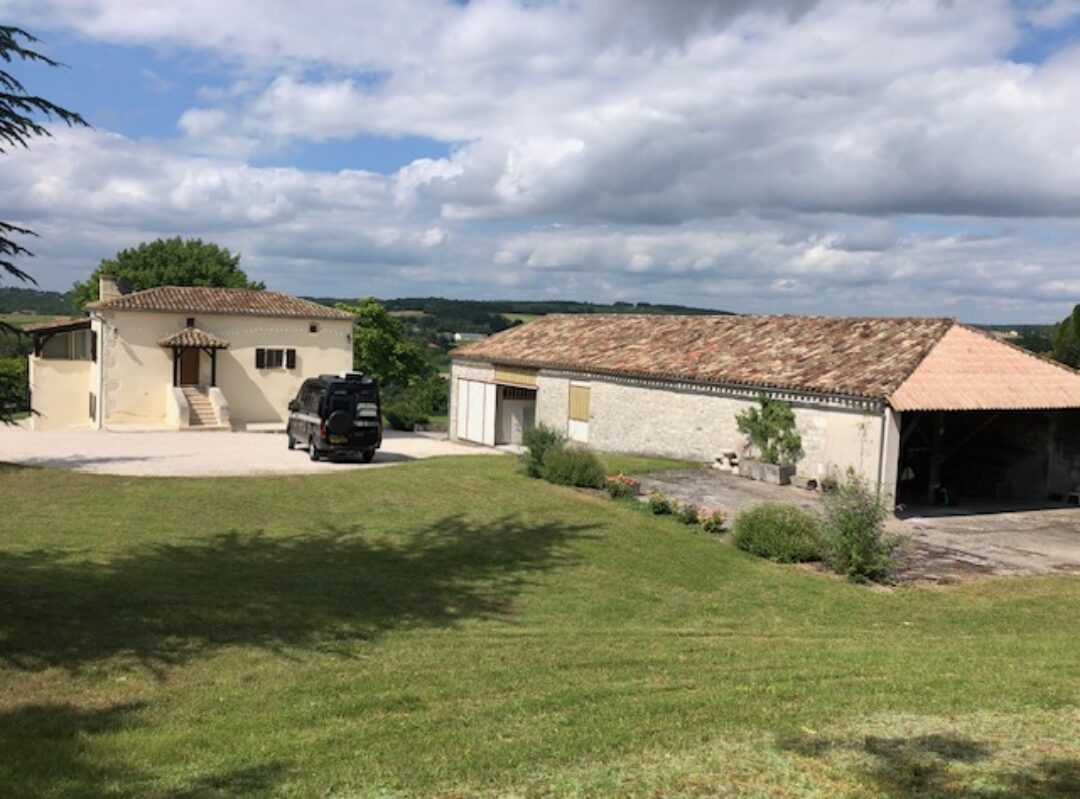We were on the edge of Cathar Country when we were in the Ariège a few weeks ago but here, in the Aude, we don’t need to travel more than a few kilometres to find a town or village steeped in Cathar history. Simon de Montfort, who led the Cathar crusades and was known for his brutality, passed through most of our nearby villages. From the canal we can see hilltop villages not far away and we set off on the bike to explore. The history of Fanjeaux dates back to Roman times when a temple to Jupiter was erected there. A strong Cathar community was also established there at the end of the 12th century. It was because of the Cathars that Saint Dominic, founder of the Roman Catholic Dominican Order, came to Fanjeaux to convert the heretics back to the Roman Catholic faith. Dominic found a number of women in Fanjeaux were heretic preachers and he was successful in winning them back to Catholicism. After seeing a fireball fall three times on the nearby hamlet of Prouilhe he established a convent there to offer protection to these women. Because of its strategic position between Carcassonne and Mirepoix, Simon de Montfort made Fanjeaux his stronghold in 1209 and the Cathars were forced to flee to other towns. Many of these Cathar locations have castles but Fanjeaux did not and it’s charm today is probably due to the creative metal sculptures found at various points around the town. We particularly liked ‘La Disputation’, a group of figures – heretics in short robes and catholics in long robes – exchanging their views.


Saint Dominic 
Fanjeaux might not have a castle but there are plenty of others to see, although there’s a danger of going into castle sensory overload so we pick and choose where we go. Lastours is an impressive location that boasts not one but four castles on the same site. It also has links with our ‘home’ village of Bram where Simon de Montfort tortured the defending villagers by gouging out their eyes, and cutting off their noses and upper lips. One villager, who was left with one good eye, was made to lead the others to Lastours, another Cathar stronghold, to terrify the heretics there. The entrance to the site is via an former textile factory at the confluence of the two rivers that form the valleys the castles defended.

In the 13th century three towers – Cabaret, Quertinheux and Surdespine – were built on the same rocky outcrop and these are some of the few original Cathar castles left. Simon de Montfort besieged the site unsuccessfully in 1209 and Cabaret became the foremost centre of resistance against the Crusaders. The Lords of Lastours lead resistance to the Crusaders between 1220 to 1229 and in 1229 they were forced to abandon the stronghold. In 1238 Lastours was transformed into a royal fortress and the French king decided the three towers had to be destroyed to eliminate any possibility of surviving Cathars taking refuge there. The castles were rebuilt on the crest and a new fourth tower – Tour Régine – was built to assert the King’s supremacy. The paths around the site give access to all of the castles and fabulous views of each one and the countryside. Despite steep drops, uneven surfaces and lots of climbing opportunities, there is a complete absence of any warning signage – a rare instance of being trusted to look out for yourself. A great visit but Joe says it definitely counts as four castles so it might be a little while before I can sneak another one past him!

Back on the Lauragais plain, we took a drive along the canal to Castelnaudary, which claims to be the place where the dish of cassoulet was invented, although both Toulouse and Carcassonne make the same claim. This is also an area familiar to many from the series Rick Stein did a few (well 16 now) years ago. I recall watching the series but had forgotten, as we drove past it, that the French Foreign Legion’s school where new recruits learn French, etc., is based just outside the town. On a bright November day the grand bassin of the port area looked very attractive, although quiet as the hire boat companies are all packed up for the season. At the entrance to the port is a flight of four locks – écluse de Saint-Roch – built to allow boats to navigate a drop of 10 metres.


The town itself was extremely quiet with lots of shops boarded up and perhaps victims of the modern retail parks on the edge of town. A walk up through the town took us to the Moulin de Cugarel, which looks out over the Lauragais cereal plains. The town once had 32 mills, their proliferation due to the canal which enabled the transport and export of flour and corn from the port. Unfortunately we weren’t able to try a local cassoulet on that day, but it’s on the list for our time here.





Hi Claire and Joe, I have just caught up on your blog. More wonderful history and scenery enhanced even more by the autumnal colours. Looking forward to the next installment. Much love Lynn xx
Thanks Lynn. The colours really are beautiful at the moment whilst the leaves are still on the trees and vines. C xx